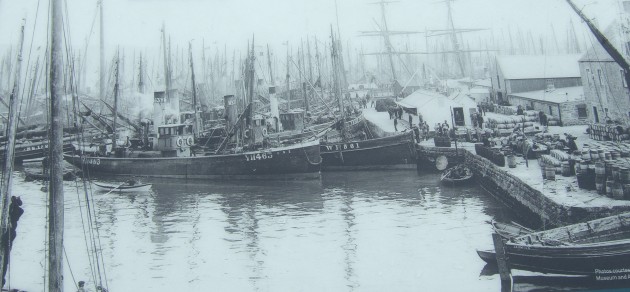The islands have long history of light, seaworthy boats designs for some of the world's harshest seas
Shetland has a long, rich and very interesting maritime history. The archipelago has depended on the sea since the time of the earliest known inhabitants 5,000 years ago.
The superb new Shetland museum in Lerwick highlights this and the islands’ geology, climate and customs. The traditional fishing boats were clinker double-enders, very similar and built in much the same way as their predecessors, the Viking longships.
Possibly the best known of these was the sixareen, a name derived from the Norn language that meant a boat with six oarsmen. It is pronounced ‘six-urn’. This is an example of one on display in the museum.

Local sailor and Lerwick Boating Club member Theo Nicolson has a wealth of knowledge about history of boats and boatbuilding. He tells me that these boats, usually about 30ft long, would line fish way as much as 30 miles west of the outermost island of Foula.
The crews, six or maybe seven men and boys, caught ling and cod which would be salted and exported to Spain, Portugal and other European countries.
The design of these boats remained the same despite many disasters during summer storms, Theo tells me, because although Shetland has sheltered voes, or sounds, there was never the money to build harbours. These boats had to be seaworthy yet light enough to haul up the foreshore.
The boats below are other examples of Shetland boats on display in the museum. The uppermost boat is a 1960s racing design based on these fishing boats. Called Barracoutta she was one of the most successful racers of her day in Lerwick thanks to a very lightweight design. Eventually these boats declined, mainly because they were ballasted with as much as three hundredweight, or 150kg, of lead that had to be tacked. The ideal crew would have been two sailors and a weightlifter!
The boat at the bottom of this photo was built in 1917 as a small fishing boat with a lugsail and later modified when outboard engines arrived. There is a well for the Seagull outboard, the propeller of which is just visible aft.

Finally, the main photo at the top, repeated at the bottom, shows the herring fleet in Lerwick in the late 1800s or early 1900s. In the foreground you can see steam drifters from the huge fleet that would have followed the herring shoals round the coast of Britain. The pair in the foreground are registered in Yarmouth and Wick.
Behind you can see the hundreds of other smaller boats that fished under sail. Every one of those would have had a crew of perhaps 7 or 10 men, says Theo Nicolson, so Lerwick would have been a lively place for a while each summer.
The photo also shows the womenfolk packing the herring in barrels. Many of them, too, would have followed the fleet as it chased the herring round the coasts of Britain and Ireland.
If you enlarge the top photo (sorry, the one below won’t go larger) you might just be able to make out a chap rowing a double-ended white boat, and that is a smaller relative of the sixareen, the Shetland fourareen – or ‘for’urn’.





